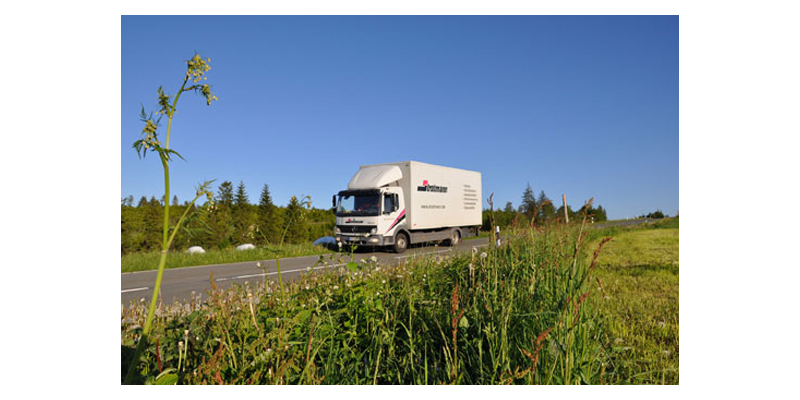
16.10.2018 | News
Successful transformation through organizational development and digitization
A case study about future-proofing a medium-sized Company.
In 2016, the Stratmann Group, a family business with 60 years of experience as a full-service provider in the areas of waste disposal and recycling was facing significant challenges typical for medium-sized companies. Internally, a leadership generation change had to be managed while externally, market conditions like the volatile market and sales development in the disposal business challenged established planning approaches. In addition, long-term trends started to show their first impacts. This include a skilled-labour shortage and new market requirements in the context of Digitization.
In this environment, the economically healthy company needed to look for new ways to secure its earning 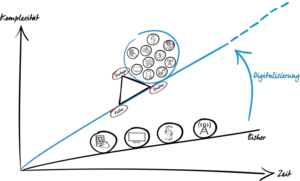 potential for the future. The increasing inter-relatedness of topics resulted in increasing complexity. In change processes this carries the danger of a Sisyphus effect which causes isolated topics to consume a lot of energy and eventually fail due to the lack of a holistic approach to the effect that change cannot be sustained successfully.
potential for the future. The increasing inter-relatedness of topics resulted in increasing complexity. In change processes this carries the danger of a Sisyphus effect which causes isolated topics to consume a lot of energy and eventually fail due to the lack of a holistic approach to the effect that change cannot be sustained successfully.
In addition, the company was heavily owner-driven. Responsibilities and tasks were assigned on a case-by-case basis. Processes were not transparent everywhere. Daily business decisions where often made by the owner That made the company flexible, but also cost-sensitive and inefficient in some places. Within the company, it has been argued that this way of working led to the successful market position. In addition, the level of digitalization in the industry is not comparable to other industries.
The management and the owner became aware that it is time to re-orient the organization towards the future and growth. The company was open to the inclusion of external know-how and so the situation of strength could be used as an advantage. next level consulting was chosen, in particular, because Stratmann was convinced that focussing on only one area, like process management, was not going to lead to sustainable changes in the Company.
Implementing sustainable change
Based on experience from other organizational development projects in SMEs, it is of vital importance to acknowledge the necessity for change and shape it holistically.
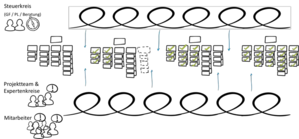 The introduction of process and project management structures is related to a comprehensive organizational structure development. Together with the management team, next level consulting developed an agile approach to design and implement the change process in an integrated way. The organizational framework was provided by an internally staffed project organization. The project name "Compass" effectively signalled the coming change to the company. Special emphasis was put on target group-specific communication and decision-making structures. The project was integrated with the organization with the help of a project team, steering and expert circles and additional focussed communication measures and structures. The project management was accompanied and coached by next level consulting. 3 guiding principles were established:
The introduction of process and project management structures is related to a comprehensive organizational structure development. Together with the management team, next level consulting developed an agile approach to design and implement the change process in an integrated way. The organizational framework was provided by an internally staffed project organization. The project name "Compass" effectively signalled the coming change to the company. Special emphasis was put on target group-specific communication and decision-making structures. The project was integrated with the organization with the help of a project team, steering and expert circles and additional focussed communication measures and structures. The project management was accompanied and coached by next level consulting. 3 guiding principles were established:
- Responsibility and decisions remain in the organization. That way management and project management remained in control of all processes
- Operational requirements determine the rate of change. The agile approach allowed the consideration of changing operational workloads.
- Process are developed bottom-up, the strategy top-down.
The requirement of the management was to involve the employees and to use their know-how in the development process.
This integrative approach was instrumental to ensure that the entire company was included in the process. The comprehensive change process was framed and controlled by a classical project organization which followed an iterative planning and controlling process. An essential feature was the integration of the project with the existing line functions, such as personnel and marketing.
The three dimensions of strategy, structure and culture will be described in more detail below.
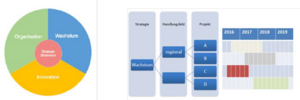
Strategy
The entire change process was guided by a clear growth strategy which required working on classic strategy topics. In addition to the classic strategy topics, the evolution of the corporate mission statement and its embedding in the organization was furthered. Over a period of nearly two years the owner and the management engaged in regular strategy workshops. Within these workshops specific focus areas were defined that served as a starting point for a newly introduced project portfolio management. It provided the framework within which the clearly defined strategic projects were executed.
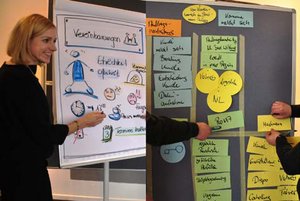 To embed the revised mission statement in the organization, several measures were implemented, such as an ideas competition and an ongoing communication e.g. in the inhouse magazine.
To embed the revised mission statement in the organization, several measures were implemented, such as an ideas competition and an ongoing communication e.g. in the inhouse magazine.
The strategy development was accompanied by the design and implementation of a management development programme that was closely coordinated with the strategy project and supported by long-term Coaching.
Structure
The starting point for the change processes was the call for "more structure". Without the involvement of the strategic and cultural dimensions the establishment of those structures would have been impossible to achieve sustainably. In total, three pillars were set up: (a) a process organization, (b) a project management organization, and (c) a restructuring of the organizational hierarchy.
PROCESS ORGANIZATION
Stratmann enjoys an exceptionally high customer satisfaction. The employees respond flexibly to customer requests and contribute to the economic success of the company. But there were unnecessary work steps, inadequate software tools and inefficient work steps calling for a process management to be build-up from scratch.
During the project, we managed to establish clear process roles and responsibilities, link the processes with the strategy, and build up a robust IT support. This was achieved on the one hand by a process-oriented use of the industry solution rona: systems, on the other hand by the use of the process management solution BIGPortal from GBTEC Software + Consulting AG, which is now also used to manage the new processes. The current work on the process organization is supported by a Process Management Office. As another step towards the decentralization of decision-making the process owners are given an annual discretionary process improvement Budget. The AS-IS processes were documented bottom-up in close cooperation with the employees, analysed together and provided the foundation for the development of the TO-BE processes. The build-up of the process organization was accompanied by extensive qualification measures for the different roles in the process organization.
Positive results are already measurable. Besides shorter process times, the digitization of the company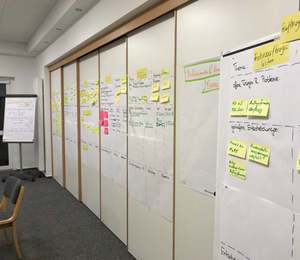 was increased e.g. in the area of customer relationship communication, software tools for commercial employees at the sites and for the drivers e.g. through e-invoices, digital order processing, apps for logistics and much more.
was increased e.g. in the area of customer relationship communication, software tools for commercial employees at the sites and for the drivers e.g. through e-invoices, digital order processing, apps for logistics and much more.
PROJECT MANAGEMENT
Based on the need to better control strategic projects and the partially bad experiences with in-house projects next level consulting together with the responsible project owners and managers at Stratmann established a resilient project organization and stable project management processes. Already today, shorter project durations are measurable, the management has a current view of all current and planned projects and the employees can plan their participation in upcoming projects better.
Qualification measures have contributed to embed the processes and role in the company. The developed project handbook supports classic as well as agile approaches.
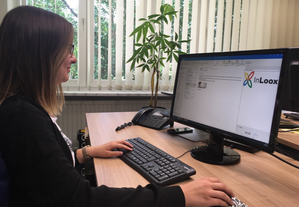 One of the noticeable improvements is the establishment of a transparent project initiation process with a clear mandate and some standard documents that support everybody involved in planning and initiation. Strategic work and operational activities are much closer aligned through this process and the introduction of a lean PM tool. This provides the basis for a resilient annual investment planning, e.g. through portfolio management for strategic projects. The targeted allocation of resources and accompanied project controlling allows for the parallel execution of multiple digitalization projects.
One of the noticeable improvements is the establishment of a transparent project initiation process with a clear mandate and some standard documents that support everybody involved in planning and initiation. Strategic work and operational activities are much closer aligned through this process and the introduction of a lean PM tool. This provides the basis for a resilient annual investment planning, e.g. through portfolio management for strategic projects. The targeted allocation of resources and accompanied project controlling allows for the parallel execution of multiple digitalization projects.
ORGANIZATIONAL STRUCTURE
In order to act more flexibly in the market and to solve technical and organizational problems faster, responsibilities were decentralized by top management and decision-making powers delegated to lower levels in the hierarchy. This was made possible by a moderate restructuring. The new organizational chart describes the roles and decision-making powers for everybody clearer and has resolved overlaps and gaps. The introduction was governed by the HR department which developed new job descriptions and a comprehensive qualification concept.
Today, the new structure provides qualified employees with further career and development opportunities in addition to classic line careers. It also supports the identification and promotion of high potentials and change agents.
Culture
Many employees of Stratmann are with the company for quite some time. Staff turnover is low. There is a high degree of identification with the company. At the start of the process, management was insisting that the employees should actively participate in the shaping of the process to avoid a “prescribed from above" situation. The experience of next level consulting shows that change processes cannot be fully controlled or managed. They can only be shaped jointly with everybody involved.
Including next level emotion, an approach was developed to support active participation. Especially valuable was the internal creative envisioning competition for “the future of Stratmann ". Solution-oriented groups like bootcamps and stand-up meetings, prepared and moderated by next level consultants, provided the platform for the practical testing and application of constructive and transparent forms of communication.
The introduction of an employee suggestion system showed quick results with more than 50 ideas that enabled some significant cost savings. Also noteworthy is the new decision-making culture that actively involves staff and executives.
Results
In the mean-time, the changes in the company are noticeable: in addition to the economic and organizational changes like cost savings, increased digitization, shortened project durations, and higher transparency, problems are tackled differently. Decisions are made decentral, people talk to each other more and try to develop solutions together. Everybody involved is aware that the process is not over yet. The company will continue to change in order to cope with the increasing dynamics of the market place.
In some places work is still on-going and it will take further strength and effort to internalize, sustain, and 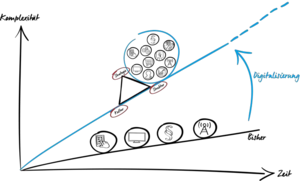 evolve the new structures and processes. So far, the outlook is promising: The Stratmann Group has grown, broadened its market presence and is better prepared for the future.
evolve the new structures and processes. So far, the outlook is promising: The Stratmann Group has grown, broadened its market presence and is better prepared for the future.
In addition to the already realized benefits, the newly developed ability of the company to respond to future changes and challenges is an essential contribution from the process.
Publisher
next level consulting Germany Unternehmensberatung GmbH
Ermekeilstrasse 46, 53113 Bonn
T +49 228 28926-0
next level consulting
Dr. Thomas Becker
Senior Consultant
next level consulting
Felix Schauerte
Managing Director
next level consulting
